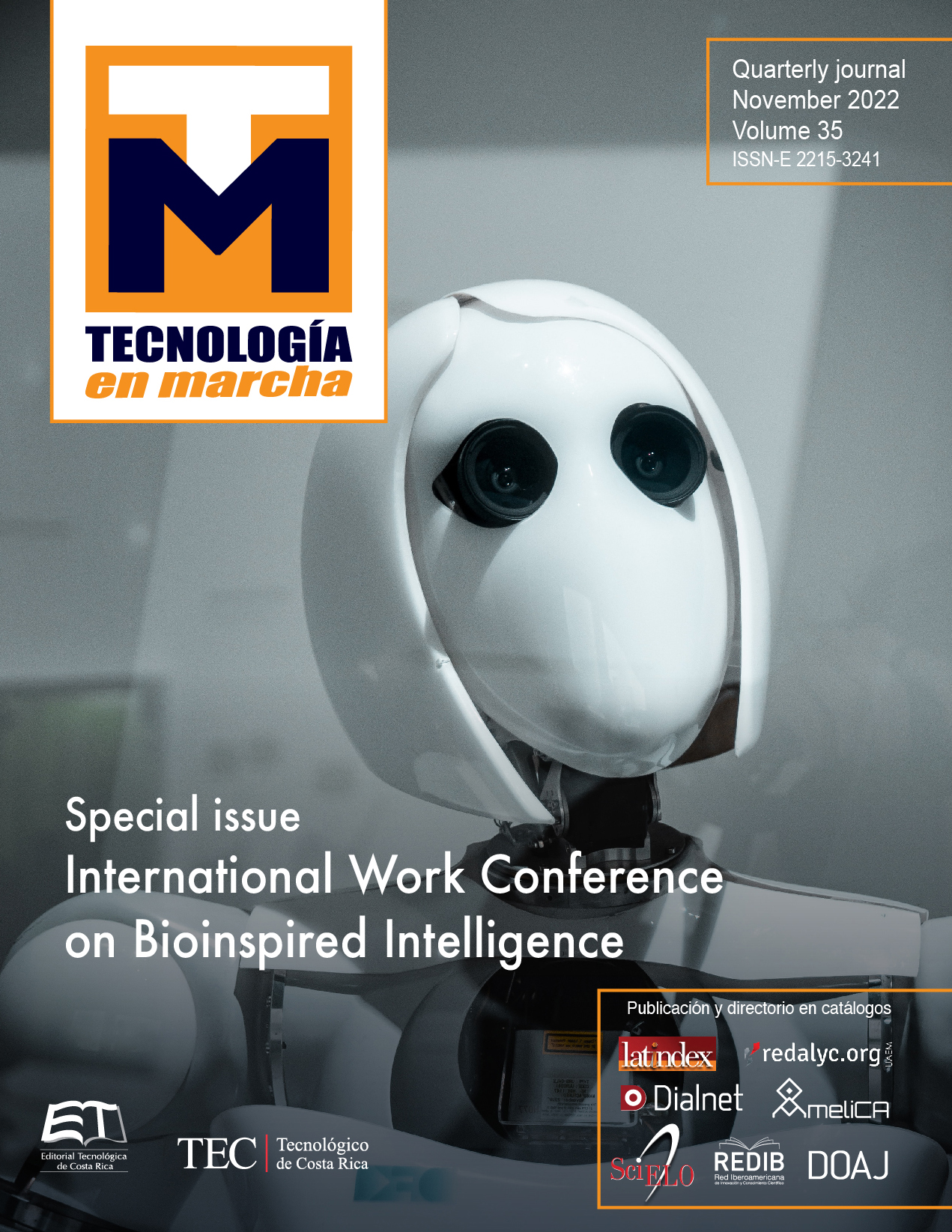Automatic diagnosis of lower back pain using gait patterns
Main Article Content
Abstract
Back pain is a common pain that mostly affects people of all ages and results in different types of disorders such as Obesity, Slipped disc, Scoliosis, and Osteoporosis, etc. The diagnosis of back pain disorder is difficult due to the extent affected by the disorder and exact biomechanical factors. This work presents a machine learning method to diagnose these disorders using the Gait monitoring system. It involves support vector machines that classify between lower back pain and normal, on the bases of 3 Gait patterns that are integrated pressure, the direction of progression, and CISP-ML. The proposed method uses 13 different features such as mean and standard deviation, etc. recorded from 62 subjects (30 normal and 32 with lower back pain). The features alone resulted in higher leave-one-out classification accuracy (LOOCV) 92%. The proposed method can be used for automatically diagnosing the lower back pain and its gait effects on the person. This model can be ported to small computing devices for self-diagnosis of lower back pain in a remote area.
Article Details

This work is licensed under a Creative Commons Attribution-NonCommercial-NoDerivatives 4.0 International License.
Los autores conservan los derechos de autor y ceden a la revista el derecho de la primera publicación y pueda editarlo, reproducirlo, distribuirlo, exhibirlo y comunicarlo en el país y en el extranjero mediante medios impresos y electrónicos. Asimismo, asumen el compromiso sobre cualquier litigio o reclamación relacionada con derechos de propiedad intelectual, exonerando de responsabilidad a la Editorial Tecnológica de Costa Rica. Además, se establece que los autores pueden realizar otros acuerdos contractuales independientes y adicionales para la distribución no exclusiva de la versión del artículo publicado en esta revista (p. ej., incluirlo en un repositorio institucional o publicarlo en un libro) siempre que indiquen claramente que el trabajo se publicó por primera vez en esta revista.
References
A. J. Aljaaf, A. J. Hussain, P. Fergus, A. Przybyla and G. J. Barton, “Evaluation of machine learning methods to predict knee loading from the movement of body segments,” 2016 International Joint Conference on Neural Networks (IJCNN), Vancouver, BC, 2016, pp. 5168-5173, DOI: 10.1109/IJCNN.2016.7727882.
D. T. H. Lai, P. Levinger, R. K. Begg, W. L. Gilleard and M. Palaniswami, “Automatic Recognition of Gait Patterns Exhibiting Patellofemoral Pain Syndrome Using a Support Vector Machine Approach,” in IEEE Transactions on Information Technology in Biomedicine, vol. 13, no. 5, pp. 810-817, Sept. 2009, DOI: 10.1109/ TITB.2009.2022927.
Pogorelc, B., Bosnić, Z. & Gams, M. Automatic recognition of gait-related health problems in the elderly using machine learning. Multimed Tools Appl 58, 333–354 (2012).
Pier Nicola Sergi, Winnie Jensen, Silvestro Micera, Ken Yoshida, In vivo interactions between tungsten microneedles and peripheral nerves, Medical Engineering & Physics, Volume 34, Issue 6,2012, Pages 747-755, ISSN 1350-4533.
R. Norman, R. Wells, P. Neumann, J. Frank, H. Shannon, M. Kerr, A comparison of peak vs cumulative physical work exposure risk factors for the reporting of low back pain in the automotive industry, Clinical Biomechanics, Volume 13, Issue 8,1998, Pages 561-573, ISSN 0268-0033.
K. Kong and M. Tomizuka, “A Gait Monitoring System Based on Air Pressure Sensors Embedded in a Shoe,” in IEEE/ASME Transactions on Mechatronics, vol. 14, no. 3, pp. 358-370, June 2009, DOI: 10.1109/ TMECH.2008.2008803.
oameng Ung, Justin E. Brown, Kevin A. Johnson, Jarred Younger, Julia Hush, Sean Mackey, Multivariate Classification of Structural MRI Data Detects Chronic Low Back Pain, Cerebral Cortex, Volume 24, Issue 4, April 2014, Pages 1037–1044, https://doi.org/10.1093/cercor/bhs378
Kulkarni, K & Gaonkar, Abhijitsingh & Vijayarajan, Vijayan & Manikandan, K. (2017). Analysis of lower back pain disorder using deep learning. IOP Conference Series: Materials Science and Engineering. 263. 042086. 10.1088/1757-899X/263/4/042086.
APA Frymoyer, J W†; Pope, M H†; Clements, J H†; Wilder, D G†; MacPherson, B‡; Ashikaga, T‡ Risk factors in low-back pain. An epidemiological survey., JBJS: Feb 1983 - Volume 65 - Issue 2 - p 213-218
https://www.everydayhealth.com/back-pain/back-pain-diagnosis.aspx, Last access on 21-07-2020
R.W. Soames, Foot pressure patterns during gait, Journal of Biomedical Engineering, Volume 7, Issue 2,1985, Pages 120-126, ISSN 0141-5425,https://doi.org/10.1016/0141-5425(85)90040-8.
Giacomozzi C., Caravaggi P., Stebbins J.A., Leardini A. (2016) Integration of Foot Pressure and Foot Kinematics Measurements for Medical Applications. In: Müller B. et al. (eds) Handbook of Human Motion. Springer, Cham https://doi.org/10.1007/978-3-319-30808-1_186-1
M. Gabel, R. Gilad-Bachrach, E. Renshaw and A. Schuster, “Full body gait analysis with Kinect,” 2012 Annual International Conference of the IEEE Engineering in Medicine and Biology Society, San Diego, CA, 2012, pp. 1964-1967, DOI: 10.1109/EMBC.2012.6346340.
https://padulainstitute.com/education/articles/risk-fall-rof-intervention-affecting-visual-egocenter-gait-analysis-yoked-prisms/, Last access on 21-07-2020
Baghel, N., Singh, D., Dutta, M. K., Burget, R., & Myska, V. (2020, July). Truth Identification from EEG Signal by using Convolution neural network: Lie Detection. In 2020 43rd International Conference on Telecommunications and Signal Processing (TSP) (pp. 550-553). IEEE.
Anjali Yadav, Anushikha Singh, Malay Kishore Dutta, and Carlos M. Travieso. “Machine learning-based classification of cardiac diseases from PCG recorded heart sounds.” Neural Computing and Applications, pages 1-14. Springer, 2019.

